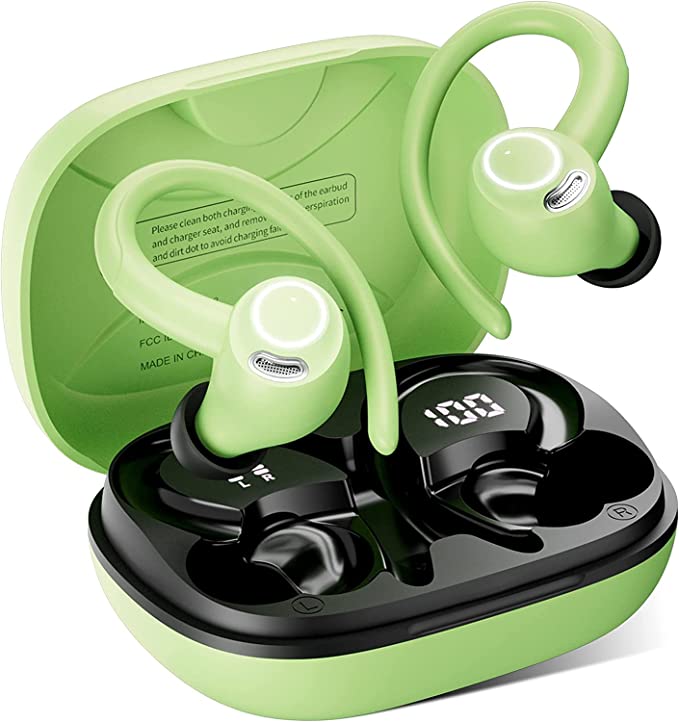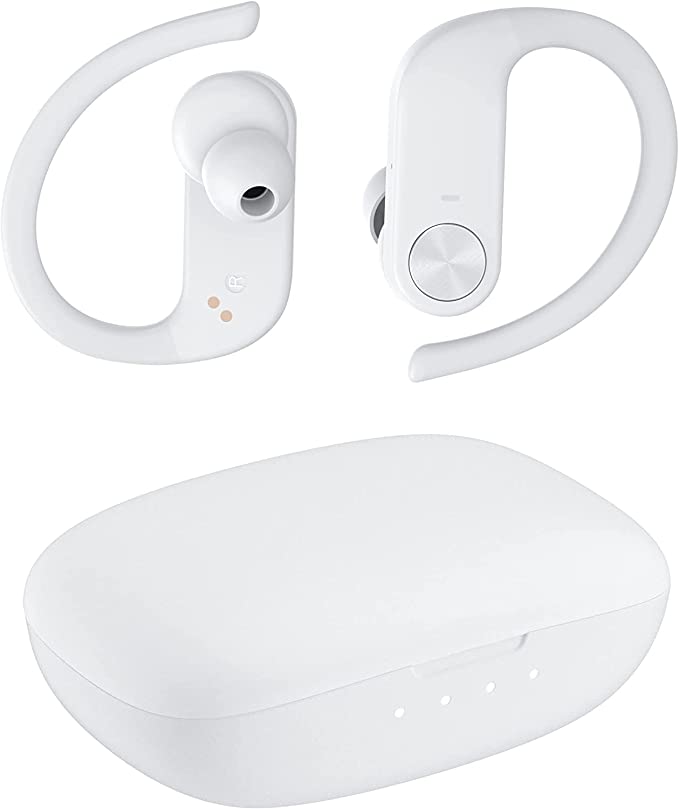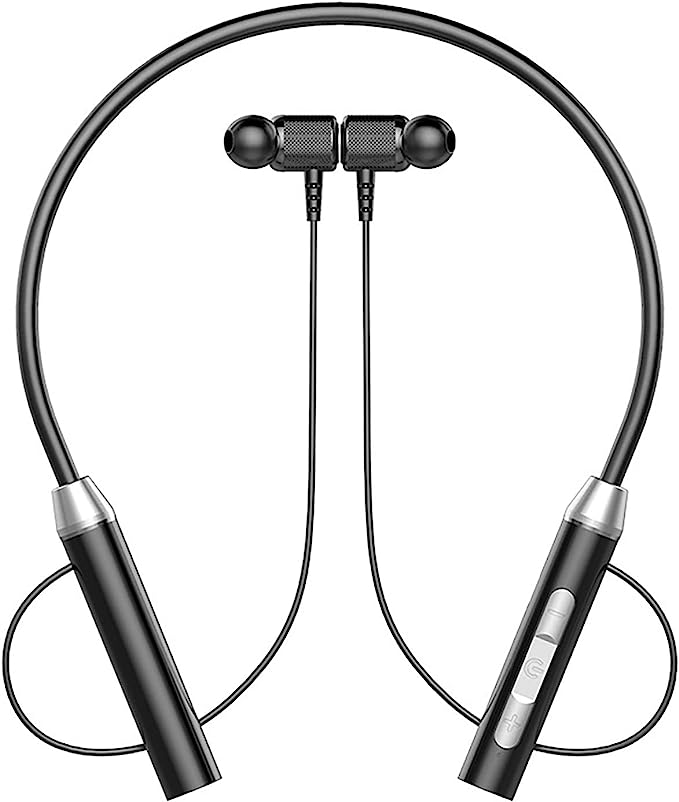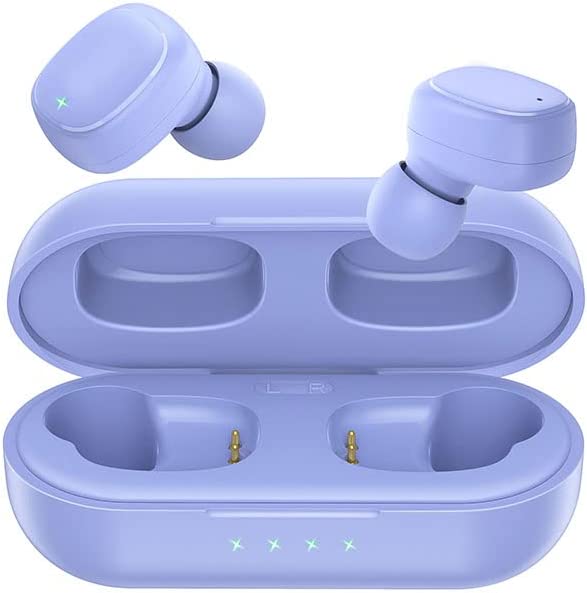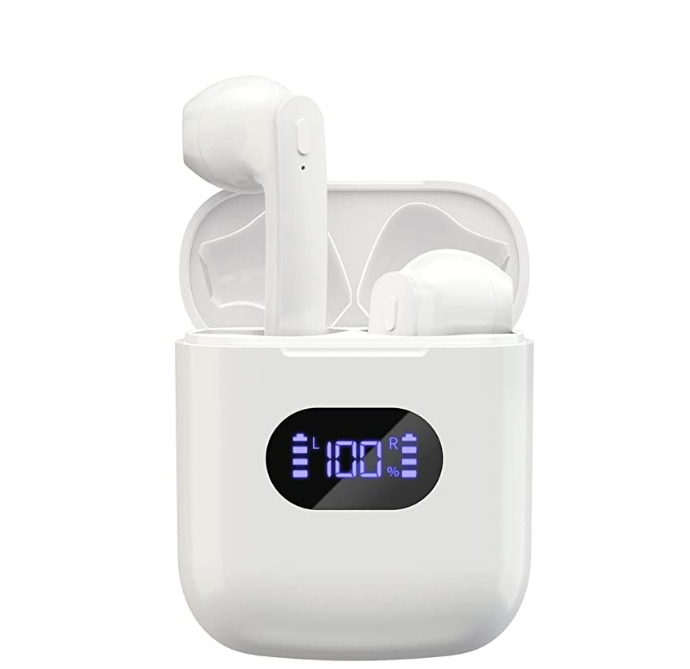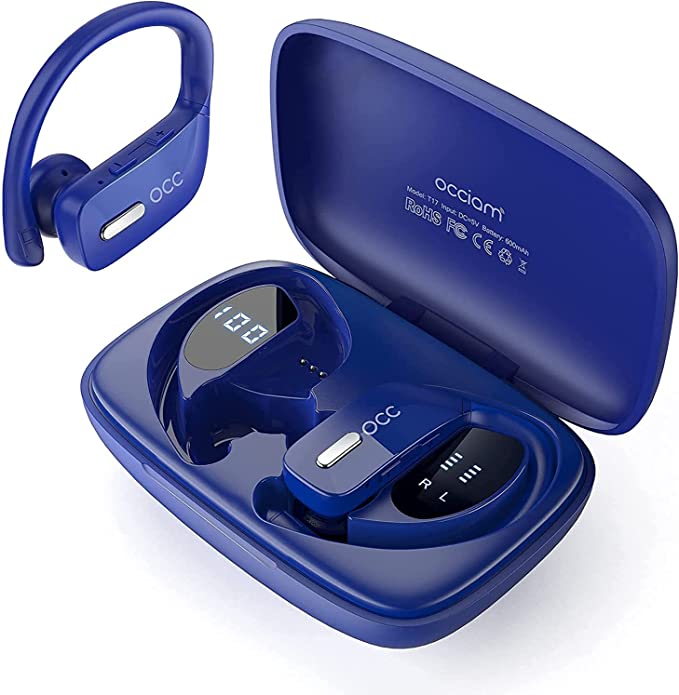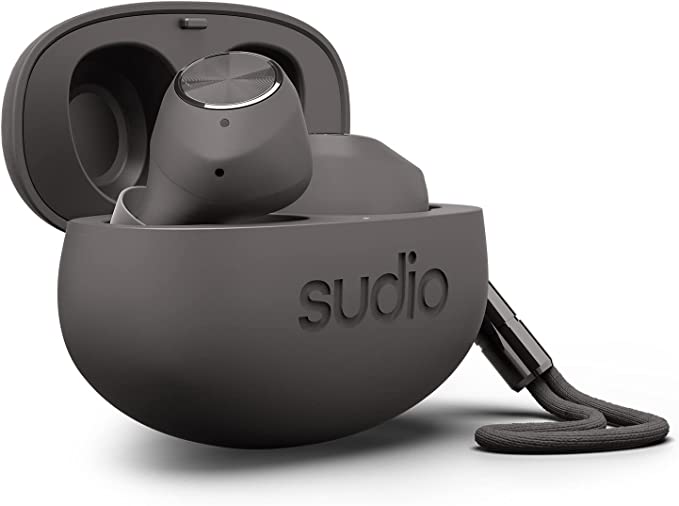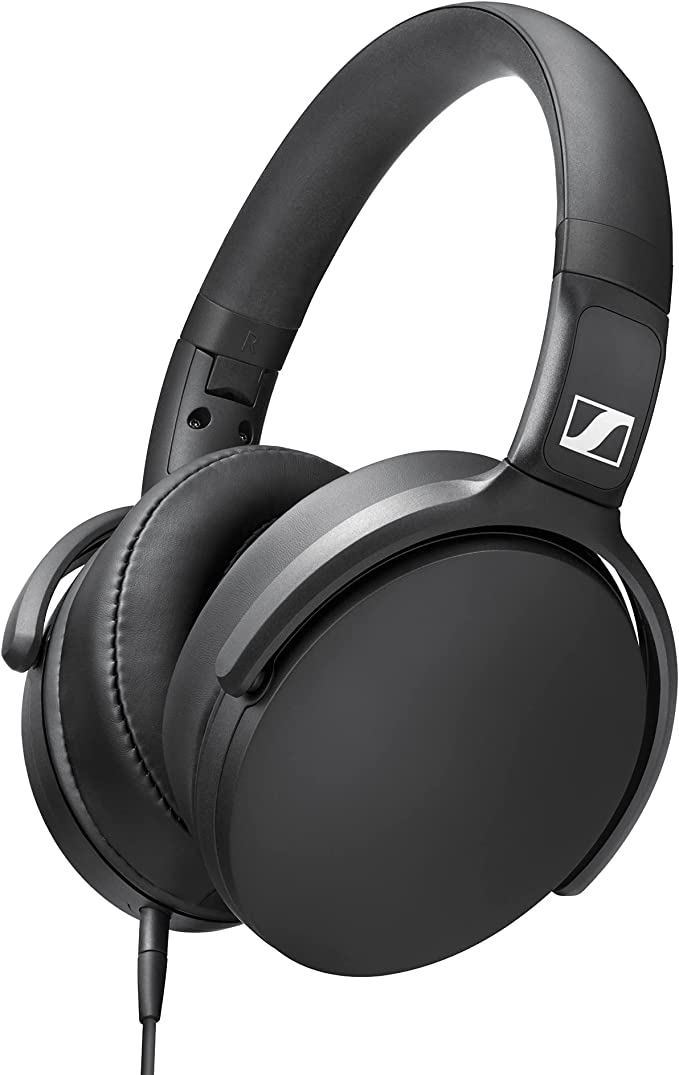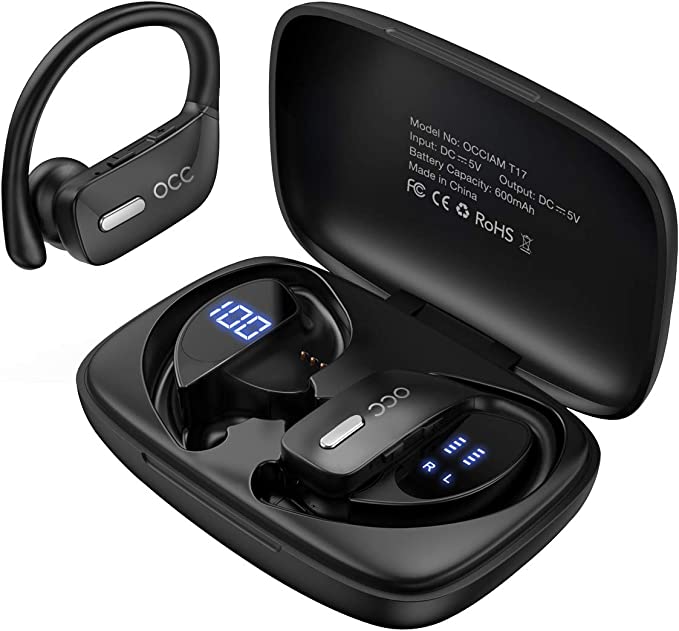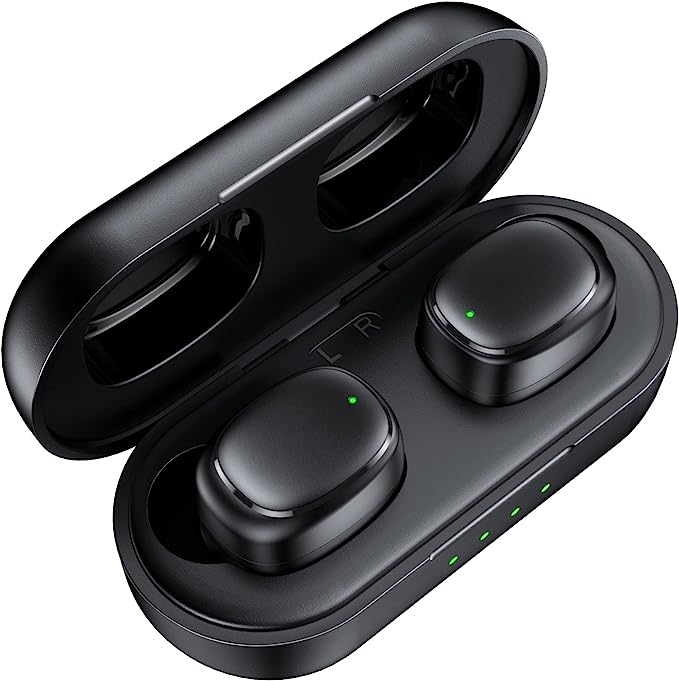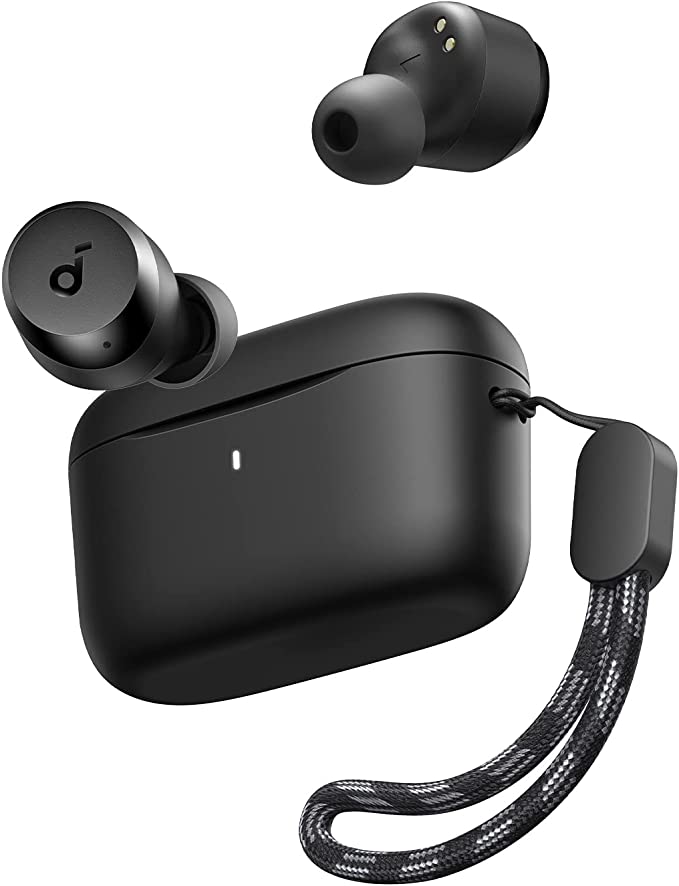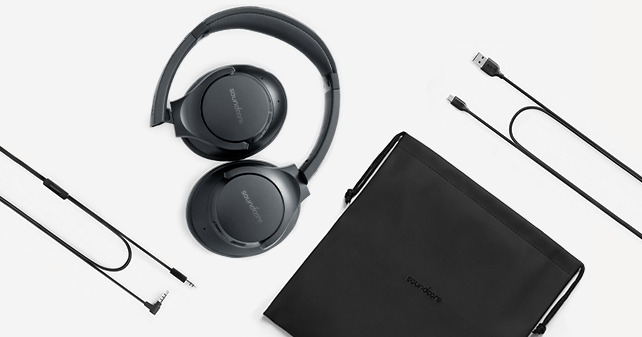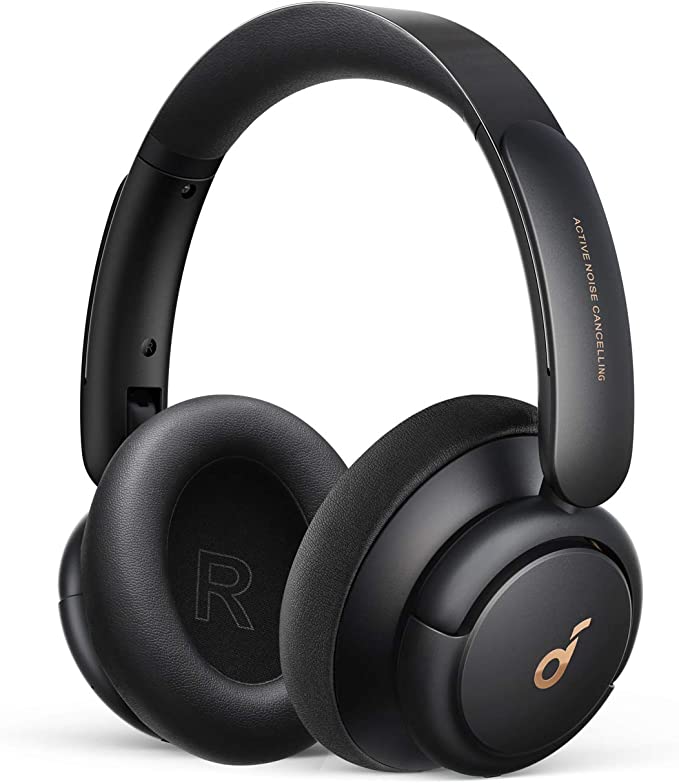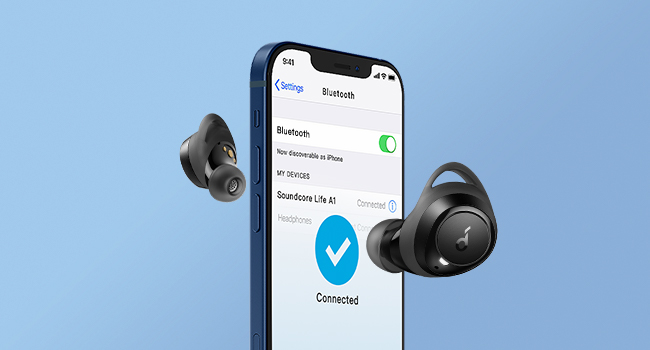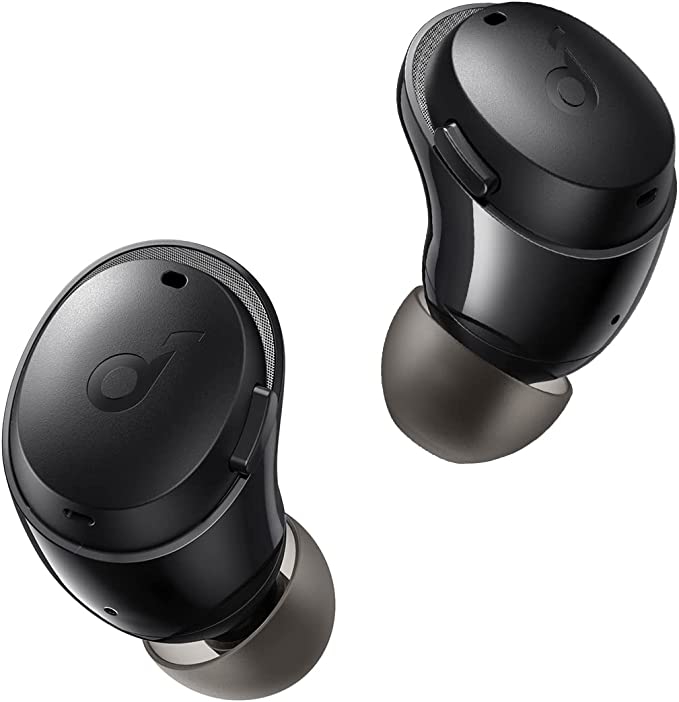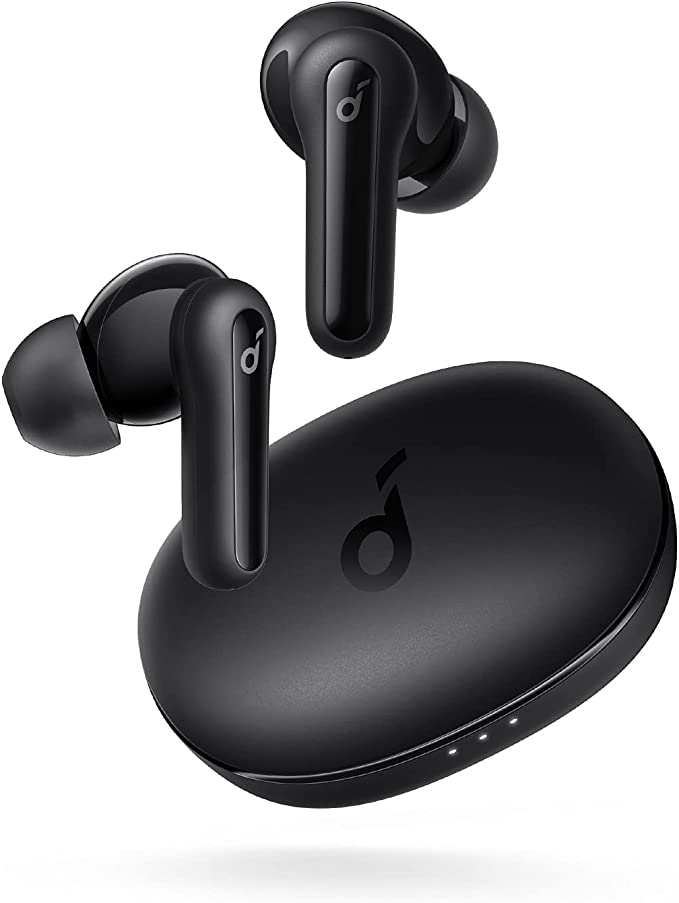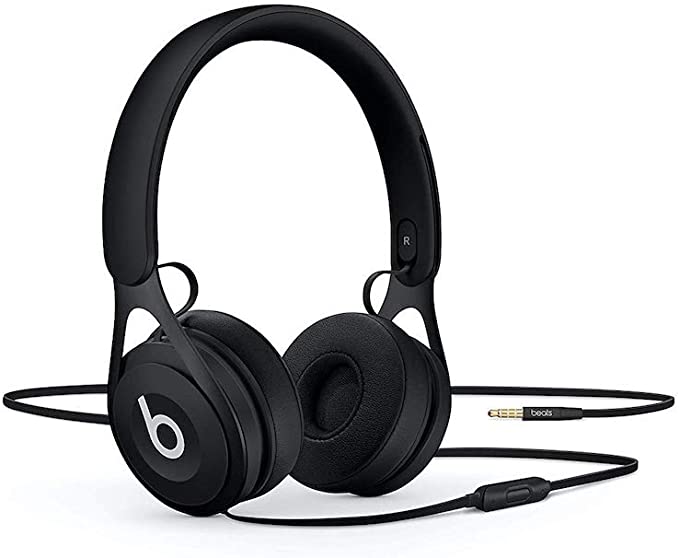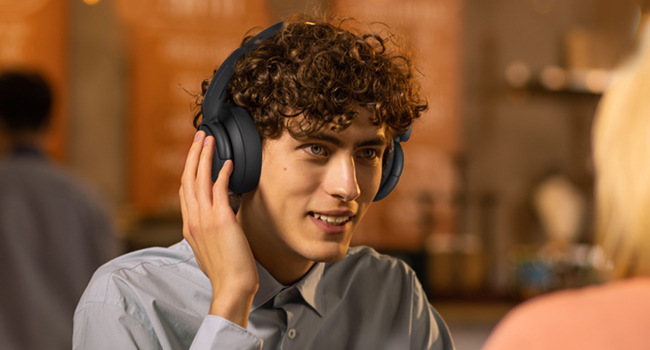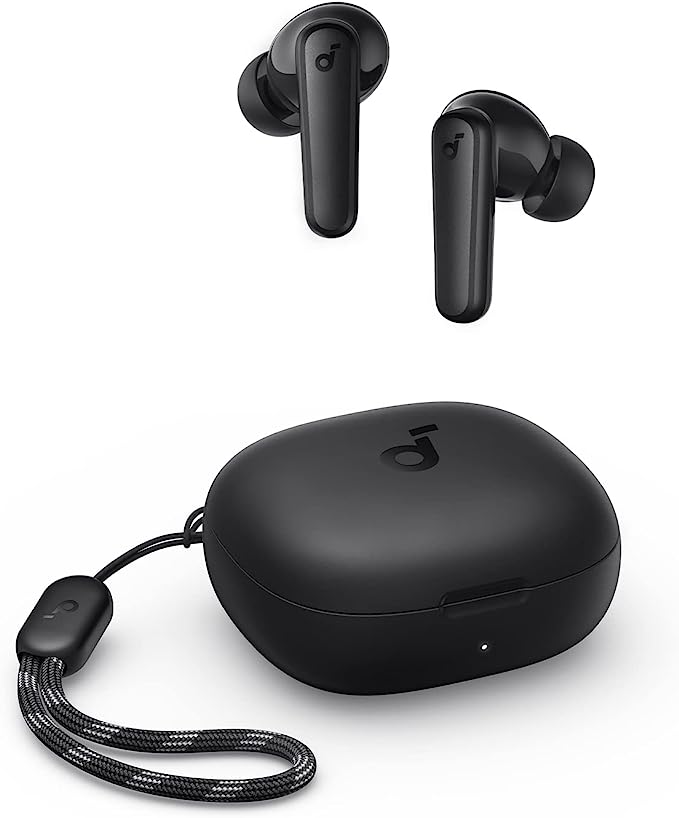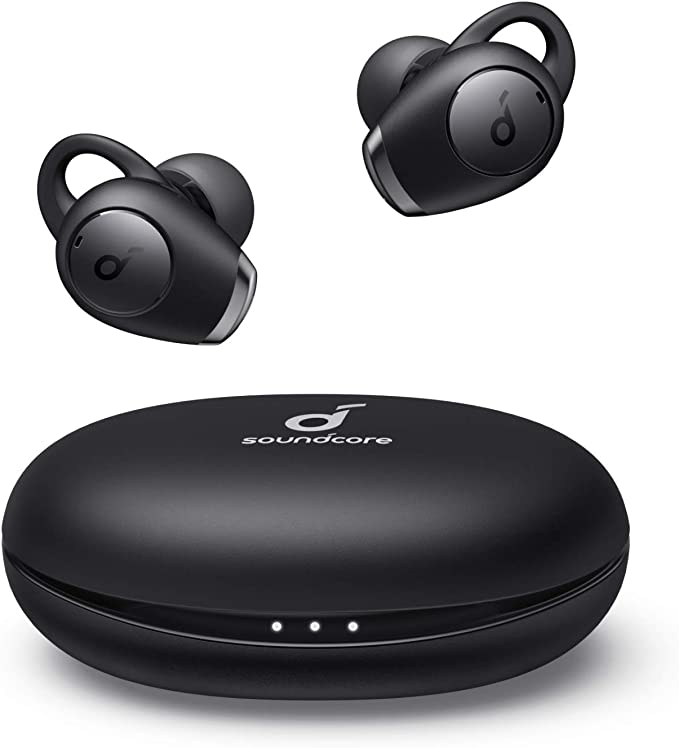BUGANI Over-Ear Wireless Headphones: Excellent Sound Quality and Comfort for Music Lovers
Update on June 26, 2025, 10:03 a.m.
In our bustling lives, the quest for a personal audio sanctuary—a space where immersive sound meets enduring comfort, all without the tangle of wires or an exorbitant price tag—is a common thread. The BUGANI Over-Ear Wireless Headphones step onto this stage, offering a suite of features that beckon a closer look. But beyond the bullet points on a product page, what scientific principles and engineering choices are at play? Let’s embark on an exploratory journey, peeling back the layers to understand how claims of “Hi-Res Audio,” robust drivers, and ergonomic design might translate into the tangible experience of listening.

The Heartbeat of Sound: Deconstructing Audio Fidelity
At the core of any headphone’s promise is its ability to reproduce sound faithfully and engagingly. BUGANI highlights “Hi-Res Audio” and “custom oversized 40 mm dynamic drivers,” so let’s tune into what these mean.
The term “Hi-Res Audio” often suggests a listening experience that surpasses the quality of a standard CD. For these BUGANI headphones, the claim is tied to their ability to reproduce “extended high frequencies that reach up to 20 kHz.” The human ear, in its prime, can typically perceive sounds ranging from about 20 Hertz (deep bass) to 20,000 Hertz (or 20 kHz, a very high-pitched shimmer). By aiming to cover this full spectrum, especially at the higher frequencies, the headphones strive to deliver more of the subtle details and nuances in a musical piece—the delicate decay of a cymbal, the airy breath of a flutist, or the subtle textures in a complex orchestral arrangement. While the term “Hi-Res Audio” can also involve factors like bit depth and sampling rates of the source files and playback electronics (which aren’t detailed for this specific device’s playback capabilities), the ability of the drivers to respond across this wide frequency range is a foundational element in the pursuit of greater sonic detail.
The engine driving this sound is the set of 40mm dynamic drivers. Imagine these as miniature, precision-engineered loudspeakers, one for each ear. The “dynamic” part refers to their operating principle, which is a marvel of electromagnetism. An incoming electrical audio signal flows through a finely wound coil of wire (the voice coil) attached to a cone-like diaphragm. This coil is suspended within a magnetic field created by a permanent magnet. As the electrical audio signal fluctuates (representing the sound waves), it creates a varying magnetic field around the voice coil, causing it to rapidly move back and forth in sync with the music’s rhythm and an_DL_ANALOG_MIXING_CONSOLE_SOUND_MASTERING_MUSIC_PRODUCTION_Metaphorplitudes. This movement pushes and pulls the diaphragm, which in turn vibrates the air, creating the sound waves that travel to your eardrums.
The “40mm” specifies the diameter of these diaphragms. Generally, a larger diaphragm has the potential to move a greater volume of air. This is particularly beneficial for reproducing low-frequency sounds (bass), making them feel more impactful and full-bodied. However, it’s not just about size; the material of the diaphragm, its shape, and the overall acoustic design of the earcup all play crucial roles in shaping the final sound signature – from deep, resonant bass to clear midranges where vocals reside, and crisp, detailed highs. BUGANI states these drivers aim for “extraordinary clarity and detail,” suggesting an engineering focus on balanced and articulate sound reproduction.
Further technical specifications provided, like an impedance of 32 ohms and a sensitivity of 118dB, offer more clues. Impedance is a measure of electrical resistance. A lower impedance, like 32 ohms, generally means the headphones are easier for portable devices like smartphones, tablets, and laptops to “drive” or power effectively to a satisfactory volume level without needing a dedicated, powerful headphone amplifier. Sensitivity, measured in decibels (dB) per milliwatt of power, indicates how loud the headphones will play for a given input signal. A sensitivity of 118dB is quite high, suggesting these headphones can achieve significant volume levels. This can be advantageous in moderately noisy environments, though it’s always wise to listen at safe volume levels to protect your hearing – the World Health Organization (WHO) recommends keeping listening levels below 85 dB for 8 hours or 100 dB for 15 minutes to prevent noise-induced hearing loss.

The Invisible Tether: Bluetooth 5.0 and the Nuances of Wireless Audio
The allure of wireless listening is undeniable, and these BUGANI headphones employ Bluetooth 5.0 technology. This isn’t just about snipping the cable; Bluetooth 5.0 brought significant improvements over its predecessors, directly impacting the user experience. BUGANI highlights “a more stable transmission speed, lower latency, and better audio output.”
Let’s unpack this. “More stable transmission speed” translates to a more robust and reliable connection between your headphones and your audio source (e.g., your smartphone). This reduces the chances of those frustrating audio dropouts or stutters, especially in environments with potential radio frequency interference – a common issue for older Bluetooth versions. The “better audio output” can be linked to Bluetooth 5.0’s increased bandwidth capacity. While the actual audio quality is heavily dependent on the audio codecs used (the compression/decompression algorithms like the standard SBC, or others like AAC or aptX, though BUGANI doesn’t specify which beyond the basic Bluetooth capability), a more capable Bluetooth version provides a better foundation for transmitting higher-quality audio streams.
“Lower latency” is particularly important. Latency, in this context, is the tiny delay between when an audio signal is sent from your device and when you actually hear it in your headphones. High latency can be a deal-breaker when watching videos or playing games, as it causes a noticeable mismatch between what you see on screen and what you hear (the classic “lip-sync” issue). Bluetooth 5.0 made strides in reducing this delay, making wireless headphones more viable for a wider range of multimedia applications.
Finally, the convenience of a built-in microphone turns these headphones into a communication tool. Leveraging the Bluetooth connection, it allows for hands-free calls. The description mentions “Mic Stereo Sound,” which typically implies that the microphone is designed to capture sound clearly, though for most headset microphones, “stereo” might refer more to the playback capability than the microphone’s input pattern which is often omnidirectional or cardioid for voice clarity.

The Ergonomic Embrace: Crafting Comfort for Hours of Listening
Amazing sound quality is quickly undermined if headphones are uncomfortable to wear for extended periods. BUGANI appears to have paid attention to this, employing an over-ear design and memory foam ear cups.
The over-ear (or circumaural) design means the earcups are large enough to completely encircle your ears, resting on the area of your head around them rather than directly on the earlobes (as with on-ear headphones). This design choice has a twofold benefit. Firstly, it often contributes to better passive noise isolation. By creating a relatively effective seal around your ears, the physical barrier of the earcups themselves helps to block out a certain amount of ambient environmental noise. Think of it like cupping your hands over your ears – you’re not using any fancy electronics, just a physical barrier. This can help you focus on your music or call without having to crank up the volume excessively, especially in moderately noisy places like an office or during a commute. It’s important to distinguish this from Active Noise Cancellation (ANC), which is an electronic system that uses microphones to detect and actively cancel out external noise – a feature typically found in more expensive headphones. User feedback for these BUGANI headphones, such as one reviewer noting they “DO NOT Cancel the noise around you,” likely refers to the absence of strong active noise cancellation, while the design itself inherently provides some passive attenuation.
The comfort aspect is significantly boosted by the “soft leather padded ear cushions” which incorporate memory foam. Memory foam, scientifically known as viscoelastic polyurethane foam, is a fascinating material. The “visco” part means it resists flow and strain, and “elastic” means it can return to its original shape. When you put the headphones on, the warmth and pressure from your head cause the memory foam to soften and conform precisely to the unique contours around your ears. This customized fit does two things: it helps to distribute the clamping force of the headband more evenly, reducing pressure points that can lead to soreness over time, and it enhances the acoustic seal, which is beneficial for both bass response and passive noise isolation. BUGANI also mentions “advanced breathability.” This is crucial because a tight seal, while good for sound, can sometimes trap heat and moisture. Breathable materials or perforation designs in the earpads help to mitigate this, allowing for longer, more comfortable listening sessions.
Complementing the earcups is the “adjustable and stretchable” headband, which can extend “up to 21cm.” This range of adjustment is key to achieving a secure yet comfortable fit for a wide variety of head sizes and shapes. A proper fit ensures the earcups are positioned correctly over the ears and that the weight of the headphones (a relatively light 204 grams according to product information) is distributed effectively, minimizing strain on the top of the head or excessive pressure on the ears. The foldable design, allowing the earcups to swivel inward, along with what the product description refers to as a durable metal hinge, enhances portability, making them easier to stow in a bag for travel or commuting.

Fueling the Beats: The Endurance of a 20+ Hour Battery
A wireless headphone is only as good as its battery life. BUGANI claims “over 20 hours of the listening time in Bluetooth mode” from its built-in 300mAh battery. While 300mAh (milliampere-hours) is a measure of electrical charge capacity, achieving such extended playtime also speaks to the overall power efficiency of the headphones’ internal electronics. This includes the Bluetooth 5.0 chipset, which is inherently more power-efficient than older versions, and the design of the amplifier circuitry that drives the speakers. For the user, this means less “battery anxiety” – the freedom to go through a full day of work calls and music, or a long-haul flight, without constantly searching for a power outlet. The FAQ section also wisely notes that actual usage time can be influenced by music type and volume levels, which is a standard characteristic of all battery-powered audio devices. When it’s time to recharge, the use of a Type-C charging port is a welcome modern convenience, aligning with the charging standard for many contemporary electronic devices. The specified charging time of “about two to three hours” is also a practical benchmark.

Pragmatic by Design: Real-World Considerations
Beyond the core specifications, a couple of practical touches add to the BUGANI headphones’ versatility. The inclusion of a 3.5mm audio cable means you’re not solely reliant on Bluetooth. This is invaluable in several scenarios: if the battery runs out unexpectedly, if you want to connect to a device that lacks Bluetooth (like an older MP3 player or an in-flight entertainment system), or even if you simply prefer a wired connection in certain situations, as some audiophiles believe a direct analog connection can sometimes offer a slight edge in sound quality by bypassing Bluetooth compression.
The product information also lists the headphones as “Water Resistant.” It’s important to interpret this term carefully. Unlike specific IP (Ingress Protection) ratings like IPX4 or IPX5 which quantify levels of water and dust resistance through standardized testing, a general “water resistant” claim usually implies a degree of protection against light moisture. For headphones, this typically means they can likely withstand sweat from a workout or a light drizzle of rain without damage. However, it does not mean they are waterproof or suitable for submersion or exposure to heavy rain. This level of resistance is practical for everyday use and active lifestyles but requires users to exercise reasonable care.

The Final Note: Where Technology Meets Experience
The BUGANI Over-Ear Wireless Headphones, as presented, attempt to weave together various strands of acoustic science, electronic engineering, material science, and ergonomic design. From the 40mm drivers aiming to span the audible spectrum to the stable embrace of Bluetooth 5.0, from the pressure-relieving comfort of memory foam to the marathon endurance of its battery, each element is intended to contribute to a positive user experience.
In a market насыщенном (saturated) with audio options, understanding the science behind the features can empower consumers to look beyond marketing buzzwords and appreciate how technology, even in an accessible package, strives to enhance our daily engagement with sound. Whether it’s for focused work, immersive entertainment, or simply the joy of music, the journey of audio technology continues to be a fascinating interplay of innovation and the timeless human desire for a richer listening experience. These headphones represent one stop on that ongoing symphony, aiming to make quality sound and comfort more attainable.
